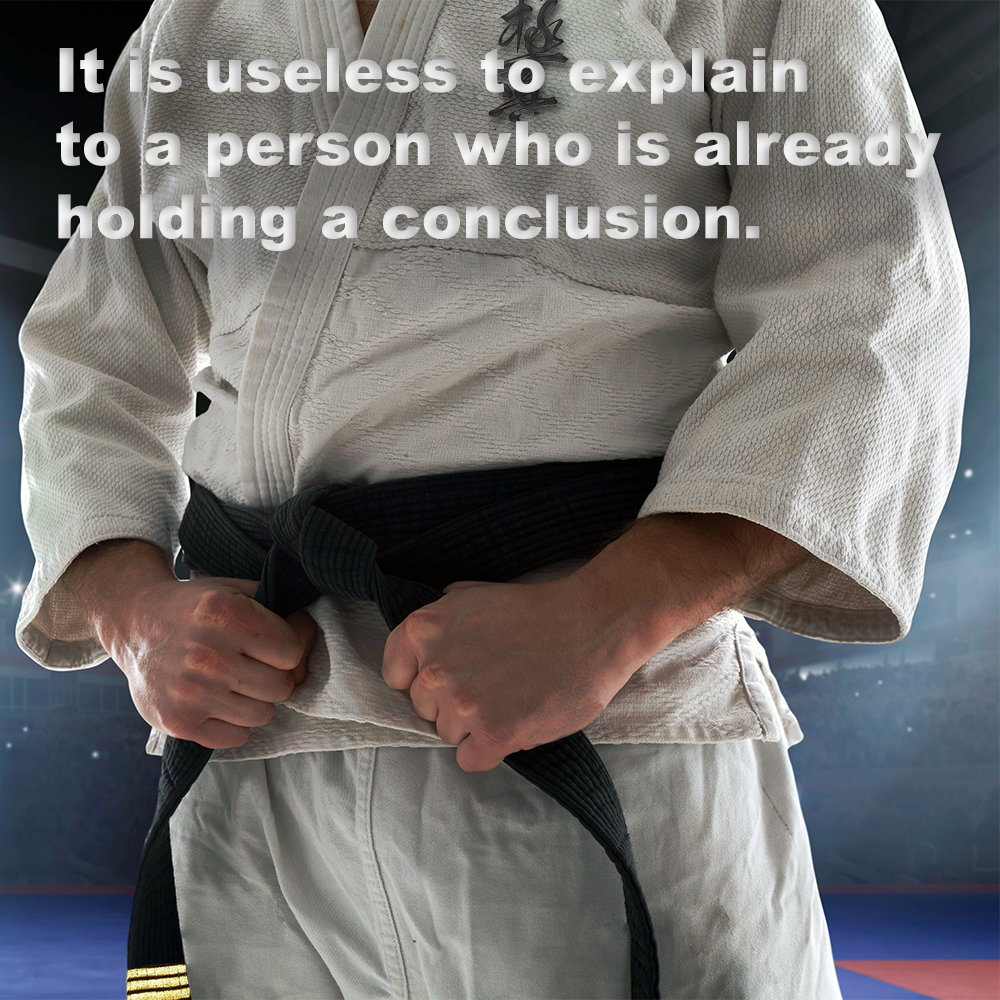
If someone thinks that a lesson is useless, then teaching them will be a waste of time. If the desire doesn’t come from the inside, the person will just go through the motions.….. they will never truly learn or understand.
.
What I have found over the years is that some people just want to keep doing the same thing over and over, holding the belief that they already possess all the knowledge they need, dismissing the pursuit of anything different.
.
No one knows it all (especially me); there is always room to learn, grow, and embrace the vast expanse of knowledge yet to be understood.
.
When I first came to the US from the UK, I was invited to teach at a dojo that had a differing viewpoint and perspective to me. I came across quite a bit of bias, with some students and instructors not open to a different way of doing things. They were very locked into “their way”.
.
Many practitioners, having attained a certain level of proficiency, fall into the trap of complacency. A mindset, characterized by a reluctance to explore different possibilities and philosophies.
.
Many claim that they teach great fighting skills and can provide an answer to every threat. Yet they focus on only one type of skill-set, and omit the rest. Really believing that what they train is the best training, they have superior skills for fighting, so why should they think they need to change anything?
.
One thing you can never, ever train into someone is that natural fighting instinct. The martial arts is one topic that is plagued by misconceptions. It has a long history, and people have a variety of different ideas about what it is and who it’s for.
.
Just because your training is focused on competition techniques, does not mean that focus translates to using your karate in a real-world scenario, and its the same if your training is solely for self-defense and you want to compete.
.
It’s essential to grasp the distinctions, and I emphasize this frequently. Why? Because a considerable number of individuals simply struggle to comprehend it.
.
There are a diverse array of styles and methods, and there is no singular, universally accepted path that is the “best” in all things.
.
Understanding the distinctions in training methodology through objective training and context is crucial. Training with the wrong objective or context can lead to indecision, and in certain situations, that could prove fatal.
.
My experience has taught me that during a fight, whether its a competitive consensual fight or a real-world scenario, your actions will reflect your training. When under stress, you instinctively revert to the actions you’ve repeatedly drilled in training.
.
And practitioners often get caught up in what they want a fight to be, rather than what a fight actually is.
.
If your goal is to win any kind of match, then you train differently than if you want to learn how to protect yourself in any kind of self-defense situation….. It’s logical isn’t it?
.
Debates and disputes over the effectiveness of various martial arts are incredibly common. I often receive numerous comments from individuals highlighting their success in competitions, which they believe is far superior to any other type of training.
.
However, what many fail to grasp is that effectiveness can only be gauged in relation to specific goals. Before drawing conclusions about the most efficient path, you must express the objectives you aim to accomplish.
.
When discussing effectiveness, determining the intended purpose, the context, is absolutely vital.
.
The effectiveness of any style, technique or movement is not absolute; it is intricately woven within the situation it is applied in.
.
.
Photo Credit: viarprodesign on Freepik
.
.
